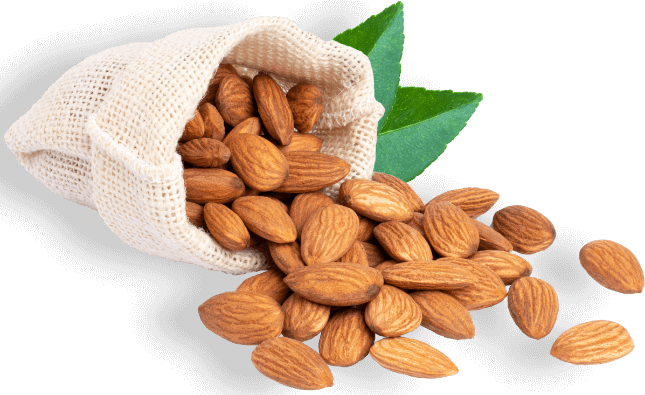This article has been republished from Nuts for Life. Read the original article.
Why we need to prioritise plant protein
New Australian research has highlighted just how important protein variety is within healthy dietary patterns (1).
It found that, for diets with higher diet quality and lower environmental impact, the likelihood of meeting nutritional needs significantly increased as variety of food choices within the ‘meat and alternatives’ or ‘protein’ food group expanded.
But another recent study, published in the journal BMC Public Health, suggests Australians have a way to go in diversifying our ‘protein’ choices (2).
Current Australian diets lack plant protein
In the average Australian diet, for adults aged 19-50 years, red meat and animal-based alternatives (poultry, fish/seafood, and eggs) contributed 87% to the total servings consumed within the ‘meat and alternatives’ food group (with 73% coming from red meat and poultry) (2).
On the other hand, plant-based alternatives (nuts and legumes) contributed just 13%.
Did you know? One of the five food groups in the (2013) Australian Dietary Guidelines (ADGs) is the ‘Lean meats and poultry, fish, eggs, tofu, nuts and seeds, and legumes/beans’ group (3). This is commonly referred to as the ‘protein’ or ‘meat and alternatives’ food group.
Nuts For Life
Table 1: Percentage contribution to serves consumed, from the ‘protein’ food group, within the average Australian diet (adults 19-50 years), and comparison to the ADG recommendations
Percentage contribution to the ‘protein’ food group
Comparison to (2013) Australian Dietary Guidelines recommendations
Red meat
44%
MORE than recommended
Animal-based alternatives
43%
MORE than recommended
- Poultry
29.4%
MORE than recommended
- Fish/seafood
8.2%
LESS than recommended
- Eggs
5.2%
LESS than recommended
Plant-based alternatives
13%
LESS than recommended
- Legumes
3.5%
LESS than recommended
- Nuts
9.5%
LESS than recommended
Source: Based on data (Table 2) in: Hendrie, GA., et al. Towards healthier and more sustainable diets in the Australian context: comparison of current diets with the Australian Dietary Guidelines and the EAT-Lancet Planetary Health Diet. BMC Public Health, 2022. 22:1939.
Did you know? The Planetary Health Reference Diet, developed by the EAT Lancet Commission, recommends plant-based options, such as nuts and legumes, make up 80% of the total amount of the ‘protein’ food group (11).
Nuts For Life
The Australian research also showed that the average Australian diet contained just 22% of the plant protein alternative servings (nuts and legumes) recommended by the 2013 ADGs.
In discussing their findings, the researchers note (2):
- The emphasis on consuming a wide variety of foods within the current ADGs is sometimes overlooked.
- Diversifying food choices within the ‘protein’ food group, in contemporary dietary guidance, is important for human and planetary health.
- This would require a significant dietary change for most Australians.
They also point out that their research considered the ‘average’ Australian diet, but that dietary patterns within the population can vary markedly.
Plant-protein foods: Priority choices, rather than ‘alternatives’
Plant-protein foods, such as nuts, seeds and legumes, within the ‘protein’ group are important within their own right, but are under consumed (2,4). This is because they are often seen as ‘minor’ choices, or as substitutes for animal proteins within the food group (5).
Did you know? Nutritionally and biologically, nuts are very different to other foods in the ‘protein’ group. As well as being rich sources of protein (with around 10-20g protein per 100g), nuts also contain fibre and heart healthy mono- and poly-unsaturated fats.
Nuts For Life
Research suggests a reduced risk of chronic disease (including cardiovascular disease and type 2 diabetes), and all-cause mortality, when more protein comes from plant foods, such as nuts, grains and legumes (6-10).
The bottom line:
When choosing protein foods, aim to include a variety of healthy plant and animal sourced options, based on your individual needs. Eating a more diverse range of foods from within the ‘protein’ food group makes it easier to meet nutritional needs.
Plant-based sources of protein, such as nuts, seeds and legumes, are vastly under-consumed in Australia. They deserve to be elevated within future Australian dietary guidance. And for us each as individuals, let’s reframe them as ‘priority choices’, rather than meat ‘alternatives’!
Legumes (such as chickpeas, beans and lentils), nuts, seeds, fish and seafood are the most beneficial sources of protein.
Australian Heart Foundation
References
- Ridoutt, B., Baird, D., & Hendrie, G. The importance of protein variety in a higher quality and lower environmental impact dietary pattern. Public Health Nutrition, 2022. 25(12):3583-8.
- Hendrie, GA., et al. Towards healthier and more sustainable diets in the Australian context: comparison of current diets with the Australian Dietary Guidelines and the EAT-Lancet Planetary Health Diet. BMC Public Health, 2022. 22:1939.
- NHMRC. Eat for Health – Australian Dietary Guidelines. Providing the scientific evidence for healthier Australian diets. 2013. Available at: https://www.eatforhealth.gov.au/guidelines
- Nikodijevic CJ., et al. Nut consumption in a representative survey of Australians: A secondary analysis of the 2011–2012 National Nutrition and Physical Activity Survey. Public Health Nutr, 2020; 23(18).
- Dietitian Connection webinar. Plant power: Should plant proteins be prioritised in dietary advice? 27 April, 2022.
- Balakrishna, R., et al. Consumption of nuts and seeds and health outcomes including cardiovascular, diabetes and metabolic disease, cancer, and mortality: An umbrella review. Advances in Nutrition, 2022. nmac077, https://doi.org/10.1093/advances/nmac077
- Aune, D., et al., Nut consumption and risk of cardiovascular disease, total cancer, all-cause and cause-specific mortality: A systematic review and dose-response meta-analysis of prospective studies. BMC Med, 2016. 14(1): p. 207.
- Bergeron N., et al. Effects of red meat, white meat, and non-meat protein sources on atherogenic lipoprotein measures in the context of low compared with high saturated fat intake: A randomized controlled trial. Am J Clin Nutr, 2019. 110(1):24-33.
- Li SS., et al. Effect of plant protein on blood lipids: A systematic review and meta-analysis of randomized controlled trials. J Am Heart Assoc, 2017. 6(12).
- Zhao H., et al. Effects of plant protein and animal protein on lipid profile, body weight and body mass index on patients with hypercholesterolemia: A systematic review and meta-analysis. J Acta Diabetologica, 2020. 5:1-12.
- EAT-Lancet Commission Summary Report 2019. Available at: https://eatforum.org/eat-lancet-commission/eat-lancet-commission-summary-report/





